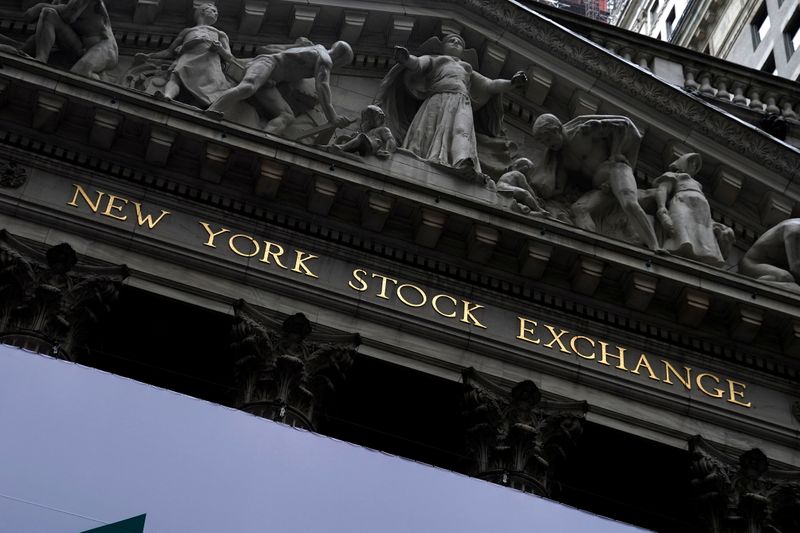By Geoffrey Smith
Investing.com -- Treasury yields rise and the dollar falls to new lows against everything from crypto to sterling as markets return to the reflation trade. Stocks are set to open up, with Deere (NYSE:DE) and Roku (NASDAQ:ROKU) conspicuous gainers. Oil is slipping as Texas oil output comes back online and refiners struggle to get back up to speed. And Joe Biden wants talks with Iran. Here’s what you need to know in financial markets on Friday, February 19th.
1. Reflation trades hit Treasuries
Yields on U.S. Treasury bonds rose back to their highest in a year as investors bet again on loose fiscal and monetary policy reflating the U.S. economy in the course of this year.
By 6:30 AM (1130 GMT), the yield on the United States 10-Year note was 1.31%, a full 118 basis points over that on the two-year. The spread between the two, hasn’t been as wide since 2017. Steep yield curves are typically associated with periods of robust growth, and the current configuration chimes with predictions of U.S. GDP topping 5% this year.
The likelihood of policy remaining loose throughout the year was given a boost by jobless claims data that showed the extent of slack in the labor market. Initial claims rose to 861,000 last week.
The U.S. data calendar is light on Friday, with only existing home sales and a speech by Boston Fed President Eric Rosengren of note.
2. Pound, Aussie hit new highs despite weak retail sales
The same factors pushing yields higher have also pushed the dollar lower in the foreign exchange markets: the Australian dollar hit its highest in over a year against the greenback, while sterling topped $1.40 for the first time in over three years.
Both currencies had to shrug off weaker-than-expected retail sales reports in Australia and the U.K., respectively.
However, cryptocurrencies appeared to remain the preferred choice of those betting on dollar devaluation: Bitcoin crested $53,000 for the first time, while Ethereum remains only a whisker off the all-time high of $1,944 that it posted late on Thursday.
3. Stocks set to end week on healthy note; Roku, Deere eyed
U.S. stocks are set to open higher after taking a hit from the jobless claims data on Thursday, which acted as a reminder of the divergence between the state of the stock market and the current state of the economy.
By 6:30 AM ET, Dow Jones futures were up 33 points, or 0.1%, while S&P 500 futures were up 0.2% and NASDAQ Futures were up 0.3%. Russell 2000 futures were doing even better, with a gain of 0.8%.
Stocks likely to be in focus later include Roku, which swung to a profit of $67 million in the fourth quarter on the back of a 58% surge in revenue. Chief executive Anthony Wood said the pandemic has “permanently changed the curve” for streaming adoption, Roku’s biggest revenue driver.
Also of interest will be earnings from Canadian automotive supplier Magna (NYSE:MGA), increasingly talked about as potential partner for Apple (NASDAQ:AAPL) in electric vehicles. Agricultural equipment maker Deere & Co has already reported its profit more than doubled in the fourth quarter, pushing its stock up 3.4% in premarket.
4. PMI surprise in two directions
Divergence was the name of the game in Europe’s economies again in January. Flash purchasing managers indices for the Eurozone showed manufacturing activity expanding at its fastest rate since early 2018, the index rising to 57.7 from 54.8. Analysts had expected a drop to 54.3.
However, services were a mirror image, as lockdowns ravaged the retail and hospitality sectors again. The Eurozone Services PMI fell to 44.7 from 45.4, disappointing hopes for a modest recovery.
Things looked better in the U.K., where both manufacturing and services both handily outstripped expectations. Markit’s U.S. PMI for January will be released at 8:45 AM ET, but tends to be overshadowed by the Institute for Supply Management’s report, which is due next week.
5. Oil slips as cold eases
Crude oil prices eased off again, as production in Texas started to resume in the aftermath of the lethal cold snap earlier in the week. The U.S. administration has also extended an offer of talks to Iran on returning to the UN-sponsored agreement on non-proliferation that Donald Trump walked away from in 2017.
U.S. crude futures were down 2.6% at $58.93 a barrel, while Brent crude was down 2.1% at $62.61 a barrel.
Texan refineries that typically handle millions of barrels of oil a day will take longer to return to normal service than the wells that extract the crude, a factor that is likely to support premiums for reined products in the near term.
In addition to Baker Hughes rig count later, the Commodity Futures Trading Commission will also release its weekly data on speculative positioning.
